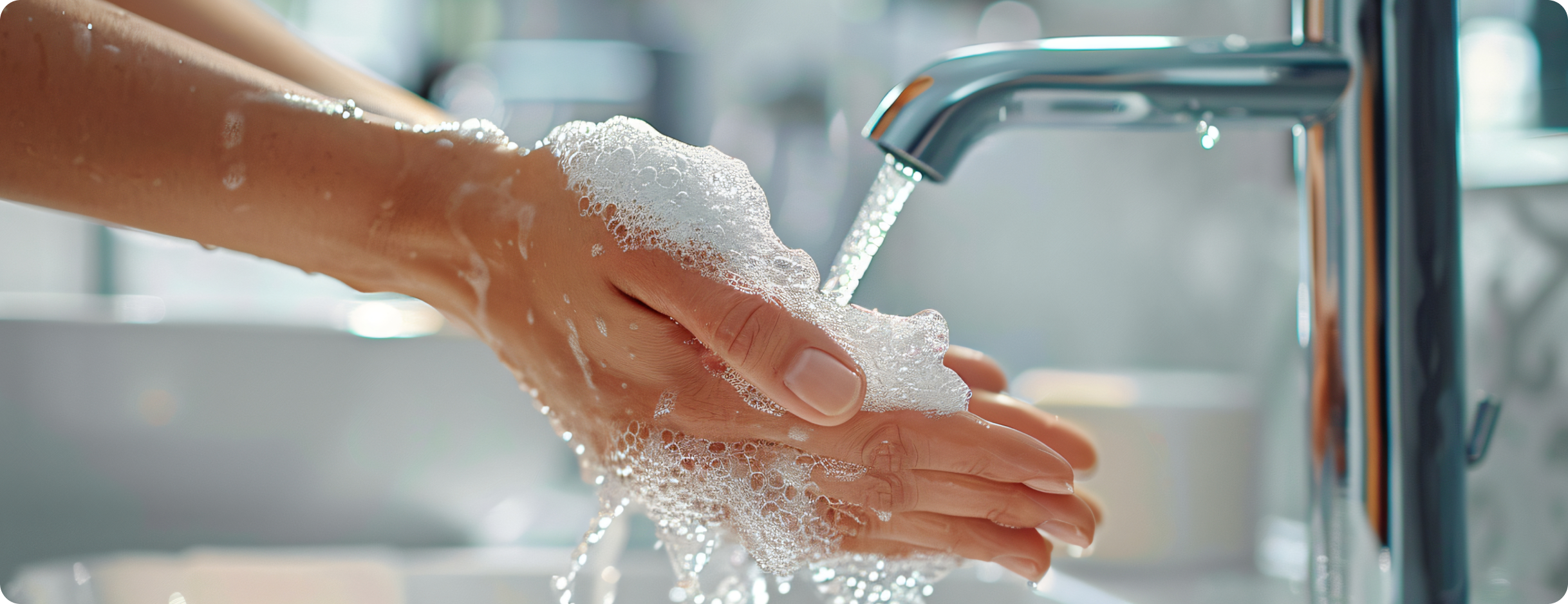The Unsung Hero: Why Handwashing is Your Best Defence Against Monsoon Maladies

Every monsoon, we see a spike in illnesses that can often be traced back to something as simple and preventable as dirty hands. Waterborne diseases like typhoid, hepatitis A, and diarrhoea thrive in the warm, wet conditions of the rainy season. With rampant floods, poor sanitation and inconsistent access to clean drinking water, widespread infection is on the rise. While vaccination and public health systems play their part, one of the easiest ways to break the chain of transmission starts with your hands.
The rise of infections during monsoons
During the monsoons, our surroundings change. Roads flood, water stagnates and drainage systems overflow, leading to contamination of drinking water sources with human waste. This is when infections like typhoid, acute diarrhoea, hepatitis A, cholera and even the flu become more common.
A recent analysis of monsoon seasons and flooding events in neighbouring Pakistan between 2021 and 2023 confirmed that heavy rains significantly increase the burden of infectious waterborne diseases. And it’s no different in India. Localities with limited WASH infrastructure (water, sanitation and hygiene) tend to report higher disease rates during this season.
The importance of handwashing
Washing your hands regularly and properly can break the chain of infection. It helps remove germs picked up from surfaces, food, animals or other people. The importance of handwashing in infection control is crucial for children, older adults and those with weaker immune systems. Clean hands mean fewer chances of carrying bacteria or viruses into your mouth, eyes, or nose, and fewer chances of falling sick.
When should I wash my hands?
The monsoon is not the time to skip hand hygiene. Make it a habit to wash your hands:
- Before, during and after cooking or handling food
- Before eating
- After using the washroom
- After sneezing, coughing or blowing your nose
- After caring for someone who is unwell
- After returning home from outside
These small steps go a long way in keeping your family safe.
Step-by-step guide on how to wash your hands
- Wet your hands under clean, running water and apply soap.
- Lather well, and don’t miss the backs of your hands, between your fingers and under your nails.
- Scrub for at least 20 seconds.
- Rinse thoroughly with water.
- Dry using a clean towel, tissue or hand dryer.
If soap and water aren’t available, use a hand sanitiser with enough alcohol content. It’s not a perfect substitute, but it works in a pinch.
Conclusion
Knowing when to wash hands is essential, but it’s only one part of staying safe. Clean water, safe food and proper sanitation all work together to reduce your risk of getting sick. This is where WASH (water, sanitation and hygiene) comes in. Communities that focus on all three are far less likely to face frequent infections, especially during the rainy season.
And while hygiene is crucial, don’t forget that vaccination adds another layer of protection, especially for diseases like typhoid. Talk to your doctor to learn more about what vaccines are right for you and your family.
Resources
Disclaimer: A public awareness initiative by Bharat Biotech International Limited. This information is for general awareness only and does not constitute medical advice. The doctors, medical facilities and graphics shown are for illustrative purposes only. For any medical advice or any question or concern you may have regarding your condition, consult your doctor.


